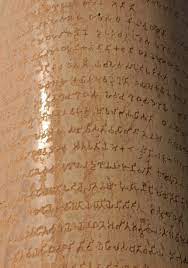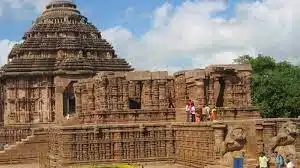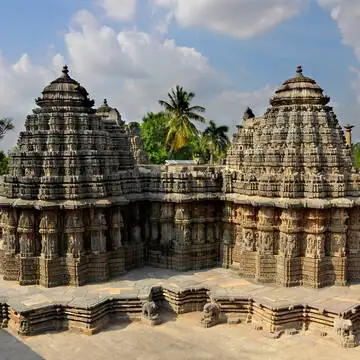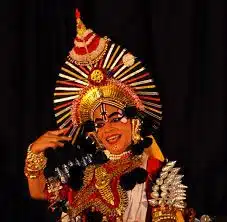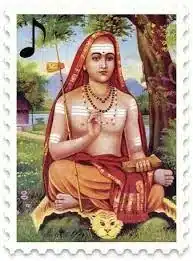List of Important Temples of India
Shore Temple (Mahabalipuram, Tamil Nadu): Temples of India
- The sculpture of Shore Temple is a beautiful example of Pallava architecture. Apart from this, glimpses of Dravidian architectural style during 7-8th century are also seen in the temple.
- It is a granite temple in Mahabalipuram built during the reign of Narasimhavarman.
- The temple is primarily dedicated to Lord Shiva, with an Anantashayana Vishnu idol in one of the three shrines within the complex.
- The height of the Shore Temple is 60 feet, which is a pyramidal structure. Built in 50 feet square area, this scenic temple is a wonderful example of Dravidian architecture and it is one of the most beautiful stone temples in India.
- Shore Temple has also been included in the list of UNESCO World Heritage Sites in the year 1984.
Kailash Temple (Ellora, Maharashtra): Temples of India
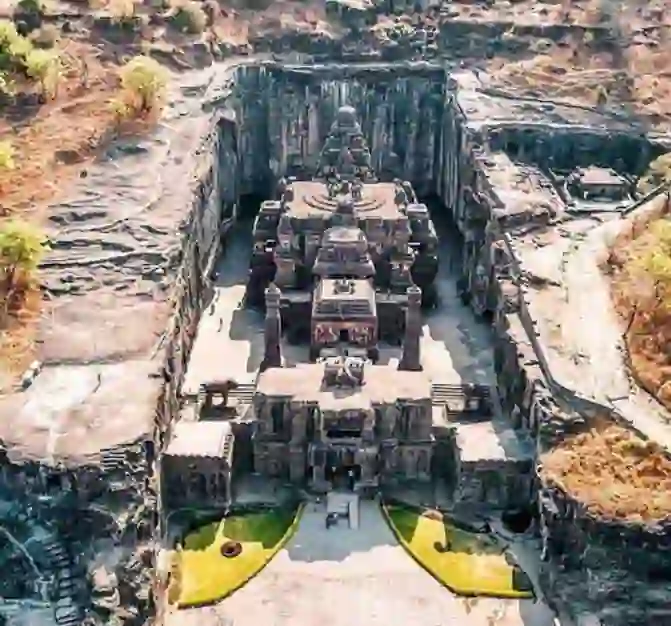
- The Kailasa temple (Cave 16) is the largest of the 34 Hindu, Buddhist and Jain cave temples and monasteries known collectively as the Ellora Caves, ranging for over two kilometres along the sloping basalt cliff at the site.
- The specialty of this temple, 276 feet long and 154 feet wide, is that it has been built by cutting only one rock.
- It is constructed from top to bottom.
- The temple was built during the reign of the Rashtrakuta king Krishna and dates back to the middle of the 8th century AD.
- It is said that stones weighing about 40 thousand tonnes were cut in the construction of this temple. this temple is dedicated to Lord Shiva. Its biggest feature is that an attempt was made to give its form like the Kailash of the Himalayas.
- According to pseudoscience books, there are countless hidden passageways beneath places like Ellora that once housed energy machines and other ancient technology. It is said that these extraterrestrial machines may have been used to build the enormous temples of Kailash. There are also mainstream discussions about mythological technology that had the ability to vaporise rocks. However, there are no reliable sources supporting any of these hypotheses.
Sun Temple (Konarak, Orissa): Temples of India
- The Sun temple at Konark was constructed by the Eastern Ganga ruler Narasimhadeva I, in about 1250 CE.
- It is a vast and wonderful structure, magnificently conceived as a gigantic chariot with 12 pairs of ornamental wheels, pulled by seven rearing horses.
- The colossal temple originally consisted of a sanctum sanctorum, with a lofty curvilinear shikhara, a Jagamohana, and a dancing hall, built on the same axis, and an extensive compound wall with three entrance gateways.
- It is conceived as a gigantic chariot of the Sun God built in Kalinga architecture (Odisha style of architecture).
Lingaraja Temple (Bhubaneswar, Orissa): Temples of India
- The Lingaraj Temple, built in the 11th century, is dedicated to Lord Shiva and is considered to be the largest temple in the city of Bhubaneswar (Odisha).
- It is believed that it was built by the Somvanshi king Yayati I.
- It is built of red stone which is an excellent example of Kalinga style of architecture.
- The temple is divided into four sections –
- vimana (structure containing the sanctum)
- Yagya Shala (Hall for prayer)
- Bhog Mandap (Hall for offerings)
- Natya Shala (hall for dance).
- Another important aspect of the temple is that it symbolizes the synthesis of Shaivism and Vaishnavism sects in Odisha. One of the reasons for this may be that both Lord Jagannath (an incarnation of Lord Vishnu) and Lingaraja temple were developed at the same time.
- The deity present in the temple is known as Hari-Hara, in which Hari means Lord Vishnu and Hara means Lord Shiva.
Lakshmana Temple (Khajuraho, Madhya Pradesh): Temples of India
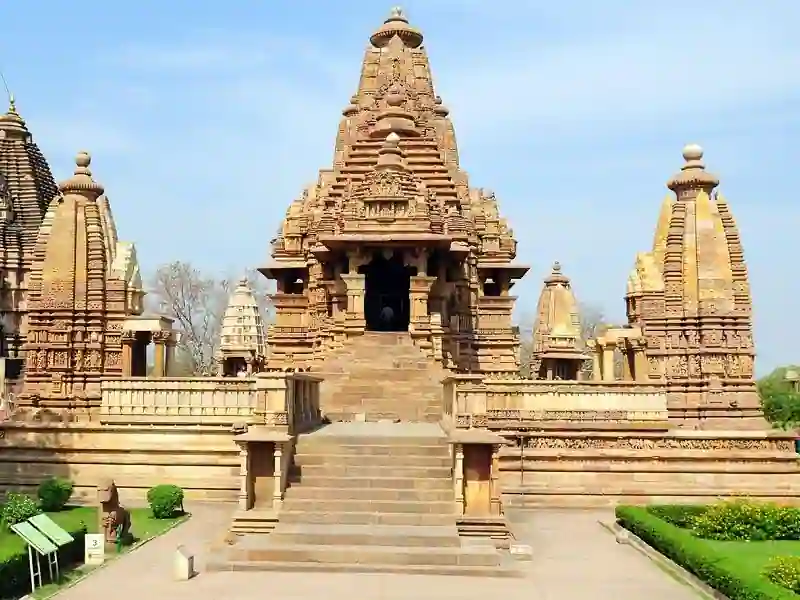
- The Lakshmana temple was the first of several temples built by the Chandela kings in their newly-created capital of Khajuraho.
- The central deity at the Lakshmana temple is an image of Vishnu in his three-headed form known as Vaikuntha.
- The Lakshmana Temple is an excellent example of Nagara-style Hindu temple architecture.
- Khajuraho Temple is a group of temples built by the rulers of the Chandela Dynasty.
- There were 85 temples scattered over an area of 9 square miles, of which only 25 temples are remaining.
- Famous for nagara-style architecture and known for extensive erotic sculptures.
Meenakshi Temple (Madurai, Tamil Nadu): Temples of India
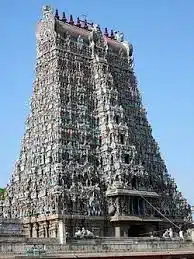
- The Meenakshi Temple is a prime example of Dravidian architecture—a style of Hindu architecture common in the southern states of India.
- The architecture includes covered porches on temples, tall entry gate towers on two or more sides, many-pillared halls, and a water tank or reservoir for ritual bathing.
- It has over 40 inscriptions.
- There are 985 richly carved pillars that depict scenes from the wedding of Meenakshi (Parvati) and Sundareswarar (Shiva).
- It is famous for its 3 storied Gopuram at the main entrance.
Brihadeswara Temple (Thanjavur, Tamil Nadu): Temples of India
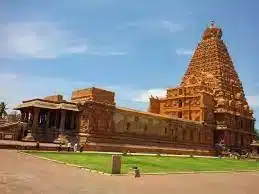
- It was built by Rajraja Chola-I and is a part of UNESCO’s World Heritage sites.
- Also known as Raja Rajeswara Temple located at Thanjavur.
- One of the tallest temples in India that is completely made of Granite. The Vimana or the temple tower (known as Raja Gopuram) is 216 Feet in height and is one of the tallest buildings of its kind.
- It is one of the Great Living Chola Temples, along with Gangaikonda Cholapuram temple and Airavatesvara temple.
- It is also called Dakshin Meru and is situated on the bank of the Cauvery River.
Dashavatar Vishnu Temple (Deoghar, Uttar Pradesh): Temples of India
- There is a Vishnu temple on the banks of the Betwa River at Deogarh near Jhansi in Uttar Pradesh. Which is one of the old temples of India.
- The story of ten incarnations of Lord Vishnu has been told through beautiful carvings in this temple. That’s why it is called Dashavatar temple.
- The temple has an idol of Lord Vishnu in the shape of Nar Narayan Tapasya and another idol in which he is lying on a serpent.
- It is about 1500 years old. It is believed that it was built during the Gupta reign.
- Although this temple is now in dilapidated condition. During the excavation here, the existence of small and square temples was found at the four corners of the temple. For this reason it can be said that this temple is the earliest example of Panchayatan style in North India.
Sun Temple (Modhera, Gujarat): Temples of India
- Modhera Sun Temple is situated on the bank of Pushpavati river in the village named “Modhera” of Mehsana district of Gujarat. This place is situated 30 km south of Patan.
- This Sun Temple is a unique example of unique architecture and craftsmanship in India.
- This temple was built in 1026 AD by King Bhimdev I of the Solanki dynasty. At present it is under the protection of the Archaeological Department of India and worship is prohibited in this temple.
- The specialty of the temple is that lime has not been used in the construction of this temple.
- There are three main parts of this temple complex – Gudhamandap (main temple), Sabhamandap and Kund (reservoir).
- Bhimdev had built this temple in two parts. The first part was the sanctum sanctorum and the second was the hall. In front of the Sabhamandap, there is a huge tank, which is known by the name of Suryakund or Ramkund.
- Very fine carvings have been done on the exterior of its pavilions and pillars.
- There are stairs to reach the bottom of the kund and there are also some small temples.
Ladkhan Temple (Aihole, Karnataka): Temples of India
- Built in the middle of the fifth century, this temple is the oldest in Aihole, the center of development of Chalukya temple architecture. The temple is flat and has a low roof.
- This temple was built by the Chalukya dynasty king Pulakeshin I in 553-67 BCE, while the work of moving the rest of the temple was done by his son Pulakeshin II.
- Originally it was a Vaishnava temple, but later it has become a Shaiva temple with the Nandi idol installed.
Mahabodhi Temple Complex (Bodhgaya, Bihar): Temples of India
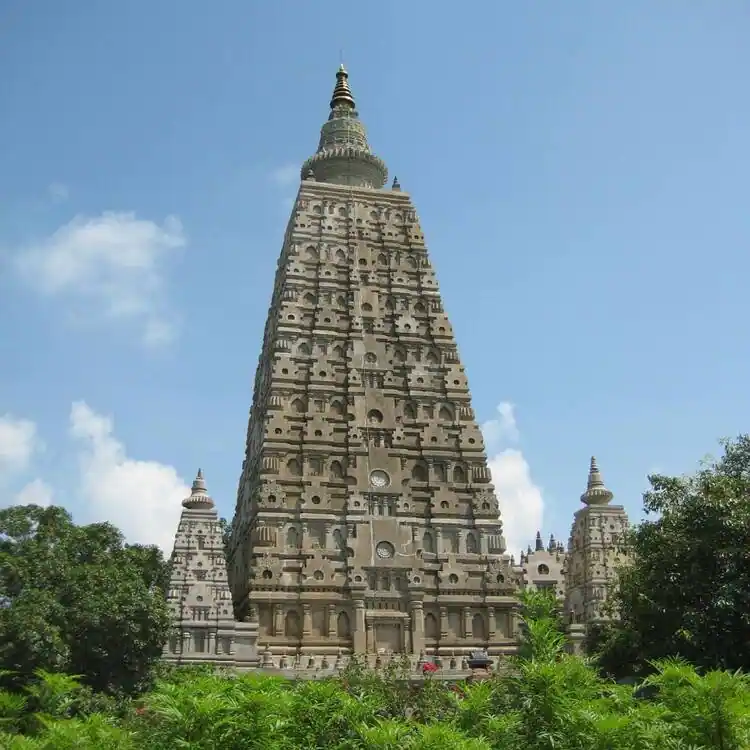
- The Mahabodhi Temple Complex is one of the four holy sites related to the life of the Lord Buddha, and particularly to the attainment of Enlightenment.
- It is one of the earliest Buddhist temples built entirely in brick, still standing in India, from the late Gupta period. The brickwork depicts the life of Buddha.
- The Central Tower Of Mahabodhi is 180 feet tall i.e. 54 meters.
- It is a UNESCO World Heritage Site.
Jagannatha Temple (Puri, Orissa): Temples of India
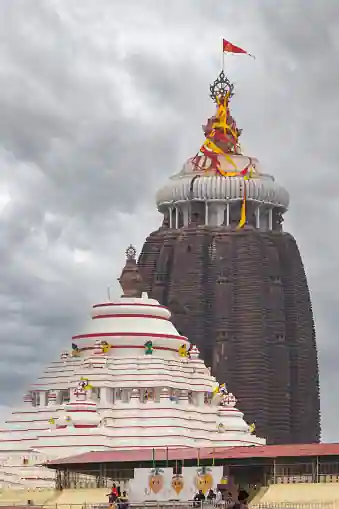
- It is an important Hindu temple dedicated to Lord Jagannath, a form of Lord Vishnu.
- The temple is one of the four great ‘Char Dham’ pilgrimage sites.
- While most of the deities in the temples of India are made of stone or metal, the idol of Jagannatha is made of wood which is ceremoniously replaced every twelve or nineteen years by using sacred trees.
- It is also called Yamanika Tirtha.
- This temple in Puri is famous for its annual chariot festival, Ratha Yatra.
- The first Jagannath temple was commissioned by King Indradyumna.
- Jagannath, Balabhadra, and Subhadra are a trio of deities worshipped at the temple.
Padmanabhaswamy Temple: Temples of India
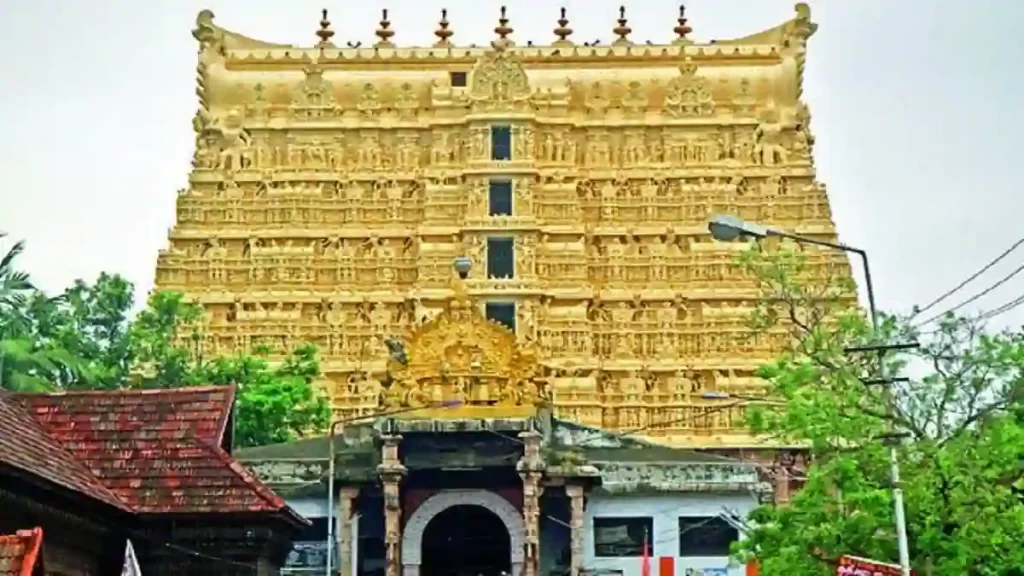
- Padmanabhaswamy Temple is a famous Hindu temple of Lord Vishnu located in Thiruvananthapuram, Kerala state of India.
- Improvement works have been done in the structure of the temple. For example, in 1733 AD, this temple was rebuilt by Martada Varma, the Maharaja of Travancore.
- In the sanctum sanctorum of the temple, Lord Vishnu is seated on Sheshnag in sleeping posture.
- It is mandatory for men to wear dhoti and women to wear saree to enter the temple.
- This temple is a unique example of Kerala and Dravidian architectural style. It is considered to be the richest temple in the world.
- It is one of the 108 holy temples of Vishnu, also known as Divya Desam of India.
- There are 7 cellars in this temple, which were opened under the supervision of the Supreme Court, in which diamonds and jewelery worth one lakh crore rupees were found. After this, as soon as the team started opening the seventh door of Vault-B, the work was stopped after seeing the picture of cobra snake made on the door. Many people believed that opening this door would be inauspicious.
Tirupati Venkateswara Temple (Andhra Pradesh): Temples of India
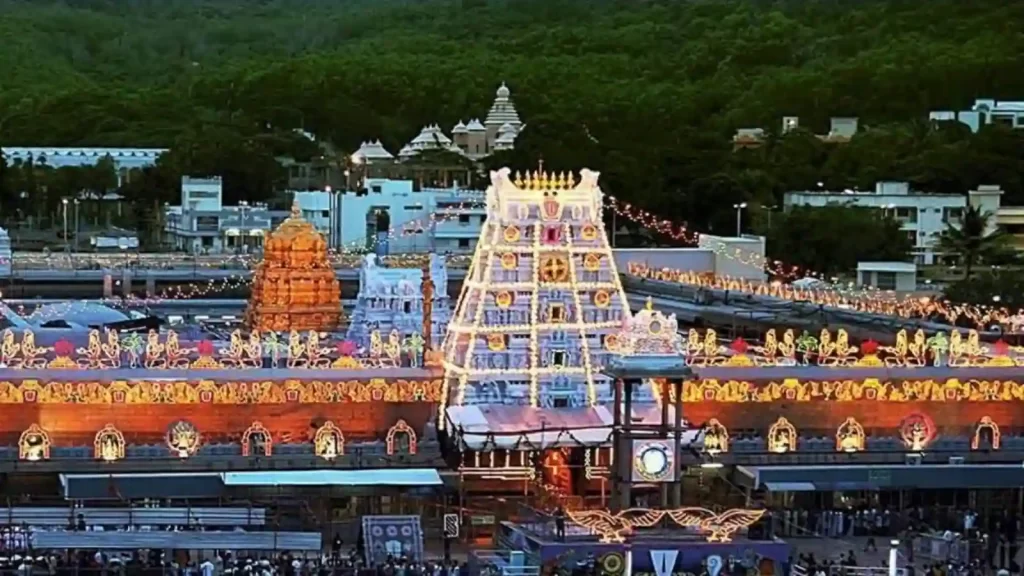
- Tirupati Venkateswara Temple is one of the major temples of India located in Tirupati. It is located in Chittoor district of Andhra Pradesh.
- This holy and ancient temple of Sri Venkateswara is situated on the seventh peak of the mountain called Venkatadri, which is situated on the banks of the pond named Sri Swami Pushkarani. That is why here Balaji is known as Lord Venkateswara. It is one of the few temples in India whose doors are open to all devotees.
- Tirupati is referred to as Trivengadam in the Sangam literature, one of the earliest Tamil literature. There are differences among historians regarding the history of Tirupati. But it is clear that by the 5th century it was established as a major religious centre. It is said that the kings of Chola, Hoysala and Vijayanagara had a special contribution in the construction of this temple financially.
- It is said that the idol of Lord Venkateswara Swamy has hair on it which is real. This hair never tangles and always remains soft. It is believed that God himself resides here.
- When one enters the sanctum sanctorum of the temple, it will appear that the idol of Lord Sri Venkateswara is in the center of the sanctum sanctorum. But as soon as you come out of the sanctum sanctorum, you will be shocked because after coming out it appears that the idol of God is situated on the right side. Now it is just an illusion or a miracle of God, no one has been able to find out till date.
- It is believed that Goddess Lakshmi is also included in this form of God, due to which there is a tradition of dressing Sri Venkateswara Swamy in both male and female clothes.
- A lamp is always burning in the Sri Venkateswara Swamy temple and the most surprising thing is that oil or ghee is never put in this lamp. It is not even known who first lit the lamp and when.
- If you listen to the idol of Lord Venkateswara, you can hear the sound of ocean waves. It is also said that the idol of the god is always moist
Kamakhya Temple: Temples of India
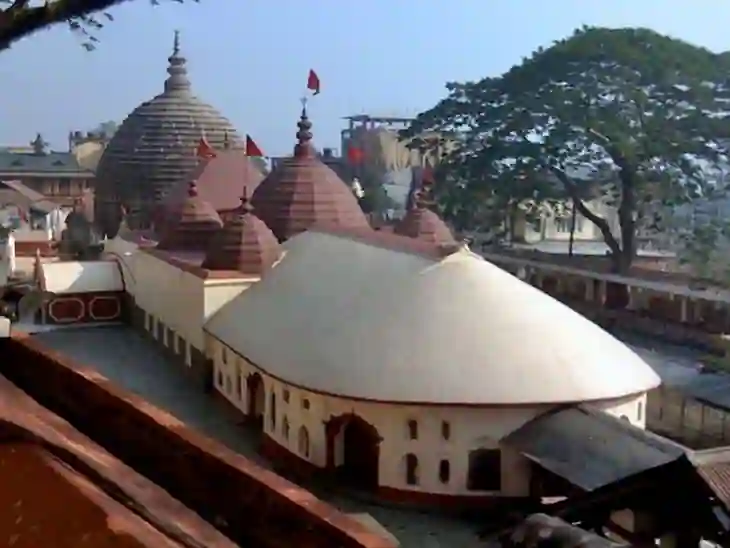
- The Kamakhya Temple in the Nilachal Hills in Guwahati, Assam is one of the oldest and most revered centers of Tantric practices, dedicated to the goddess Kamakhya.
- The temple is the center of the Kulachar Tantra route and the site of the Ambubachi Mela, an annual festival that celebrates the goddess’s menstrual cycle.
- Structurally, the temple is dated to the 8th–9th centuries with several subsequent reconstructions—and the final hybrid architecture defines a vernacular style called Nilachal. It is one of the oldest 4 Peethas out of 51 Peethas of the Shakta tradition.
- Originally a place of worship of a local goddess where the primary worship of aniconic yoni in natural stone continues till today. The Kalika Purana, which was written during the Pala rule, associated Naraka, the legitimate ancestor of the Kamarupa kings, with the goddess Kamakhya representing the region and the Kamarupa kingdom.
- It has been suggested that historically the worship progressed in three stages—the Yonis under the Mlechhas, the Yoginis under the Palas and the Mahavidyas under the Kochas.
- The main temple is surrounded by a complex of separate shrines dedicated to the ten Mahavidyas of Shaktism, namely Kali, Tara, Tripura Sundari, Bhuvaneshwari, Bhairavi, Chinnamasta, Dhumavati, Bagalamukhi, Matangi and Kamalatmika. Of these, Tripurasundari, Matangi and Kamala reside inside the main temple while the other seven reside in separate shrines.
Hoyasaleswara temple (Halebid, Karnataka): Temples of India
- It is built in dark schist stone by the Hoyasala king Vishnuvardhan in 1150.
- The bottom frieze of the temple features a continuous procession of hundreds of elephants with their mahouts.
Parasurameswara Temple (Bhubaneswar, Orissa): Temples of India
- The temple is dedicated to the god Shiva and is one of the oldest existing temples in the state.
- It is believed to have been built around 650 CE in the Nagara style of architecture that emphasizes vertical structure and has all the main features of the pre-10th century Orissan-style temples.
- It is the first temple to have an additional structure called jagamohana, compared to the earlier temples that had only the vimana.
Mukteshwara Temple (Bhubaneswar, Orissa): Temples of India
- The 10th-century Mukteswara Temple in Bhubaneswar represents the full development of the Kalinga Architecture its “deul”, or tower, and “Jagmohan”, or assembly hall.
- The splendid Torana of the temple, an ornamental arched gateway, is very much reminiscent of Buddhism in Orissa.
Dilwara temple (Mount Abu in Rajasthan): Temples of India
- The Dilwara temple is dedicated to Jain Tirthankars. These were built under the patronage of the Solanki rulers.
- It was built in pure white marble and adorned with exquisite sculpture.
Vittala Temple or Vitthala Temple (Hampi, Karnataka): Temples of India
- The iconic temple has amazing stone structures such as the incomparable stone chariot and the fascinating musical pillars.
- It was built during the reign of King Devaraya II (1422 – 1446 A.D.), one of the rulers of the Vijayanagara Empire.
Gomateshwara Bahubali Temple (Shravanabelagola in Hassan district, Karnataka): Temples of India
- The statue at Shravanabelagola is believed to be one of the largest free-standing statues in the world, which was built in 983 AD by the minister of the Ganga dynasty, Chamunda-Raya.
- The Mahamastakabhisheka Mahotsava is an anointing ceremony of the statue of Lord Bahubali.
- It is also known as the Bahubali temple.
- The tallest monolithic statue (Of Gomateshwara) in the world is carved out of a single block of granite.
- It is a Jain temple that is 57 feet high.
Golden Temple (Amritsar, Punjab): Temples of India
- Golden Temple is also known as Sri Harmandir Sahab and Sri Darbar Sahab.
- Guru Arjun Dev, the fifth Sikh Guru, gave the idea of the construction of a temple where Sikhs can come and worship.
- Temple was plated in Gold in 1980 from the wealth and material donated by Maharaja Ranjit Singh.
Kandariya Mahadev Temple (Khajuraho, Madhya Pradesh): Temples of India
- The Kandariya Mahadeva temple is adorned on all sides with celestial nymphs, mithunas, and many deities.
- The towering shikhara and its subsidiary replicas clustered at varying heights present a grand analogy to Mount Kailasa, Siva’s abode.
Kashi Vishwanath Temple (Varanasi, Uttar Pradesh): Temples of India
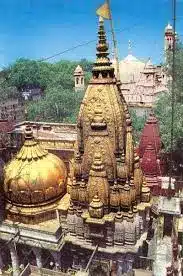
- The original Vishwanath temple was destroyed by the army of Qutb-Uddin Aibak in 1194 CE when he defeated the Raja of Kannauj.
- There is a small well in the temple called the Jnana Vapi also spelt as Gyaan Vapi
- In 1669 CE, Emperor Aurangzeb destroyed the temple and built the Gyanvapi Mosque in its place.
- In 1780, Malhar Rao’s daughter-in-law Ahilyabai Holkar constructed the present temple adjacent to the mosque
- It is one of the 12 Jyotirlingas.
Virupaksha Temple (Karnataka): Temples of India
- Built by Lakkana Dandesha, a chieftain under the ruler Deva Raya II of the Vijayanagara Empire.
- It forms a part of Group of Monuments at Hampi that is designated as UNESCO World Heritage Site.
Nataraja Temple (Tamil Nadu): Temples of India
- The temple wall carvings display all the 108 karanas from the Natya Shastra by Bharata Muni; these postures form the foundation of Bharatanatyam, a classical Indian dance.
- It was built in the 10th century when Chidambaram was the capital of the Chola dynasty.
- It is one of the oldest surviving active temple complexes in South India.
Ramanathaswamy Temple (Tamil Nadu): Temples of India
- One of the twelve Jyotirlinga temples built in the 12th Century.
- It has the longest corridor among all Hindu temples in India.
- It is built in the Dravidian style of architecture.
- Creators – Pandyas and Jaffna Kings
- There are 64 Tīrthas i.e. holy water bodies in and around the island of Rameswaram.
- It is also one of the Char Dhams.
Ranganathaswamy Temple (Tamil Nadu): Temples of India
- One of the most important of 108 (Divya Desam )Vishnu Temples.
- It is built in Dravidian style, constructed in Vijayanagar Period.
- It is located on the island formed by twin river- Cauvery & Coleroon.
- 1st temple to be awarded by the UN Body for protecting and conserving cultural heritage.
- Its Gopuram is the biggest Gopuram in Asia. Also, it is the largest functioning Hindu temple in the world.
Rajarani Temple: Temples of India
- Rajarani Temple is an 11th-century Hindu temple located in Bhubaneswar, the capital city of Odisha (Orissa previously), India.
- It is believed that the temple was originally known as Indreshwar.
- It is locally known as the “Prem Mandir” because of the erotic carvings of women and couples in the temple.
- The Rajarani temple is built in the Pancharatha style on a raised platform with two structures: a central shrine called the vimana (sanctum) with a bada (curved spire) rising to a height of 18 meters (59 ft) on its roof, and a viewing hall called the Jagmohana, with a pyramidal roof.
- The temple was constructed of dull red and yellow sandstone locally known as “Rajrani”.
- There are no images inside the sanctum, and hence it is not associated with a specific sect of Hinduism, but is broadly classified as Shaivite based on the niches.
Also, refer :
- Download the pdf of Important MCQs From the History Of Ancient India
- List Of Important Inscriptions In India

